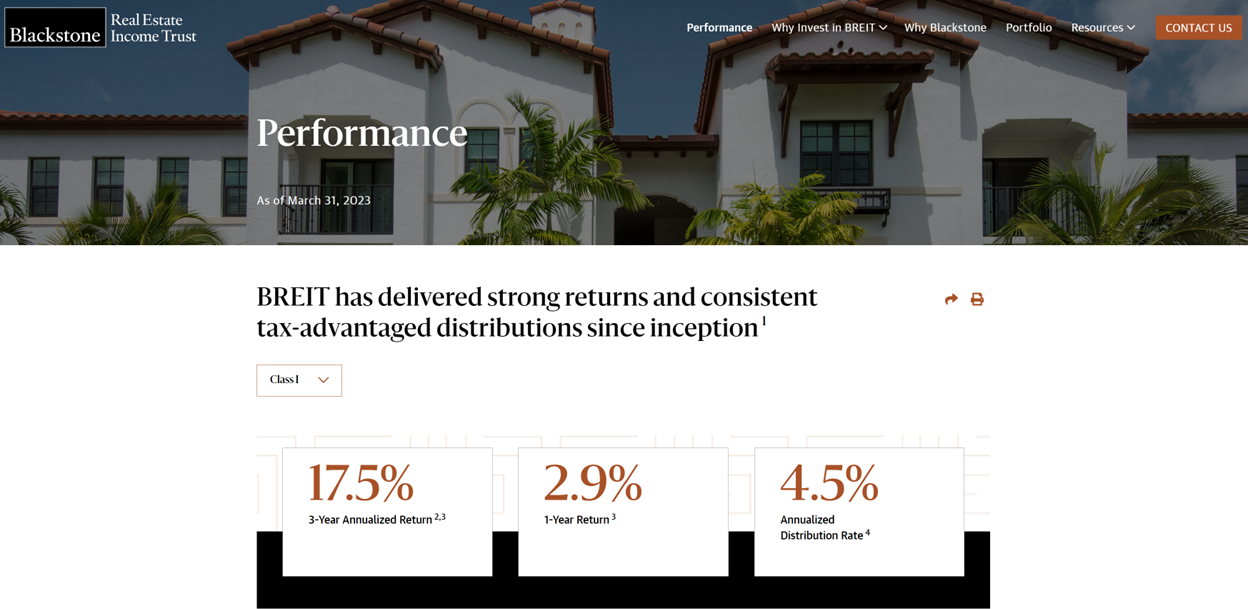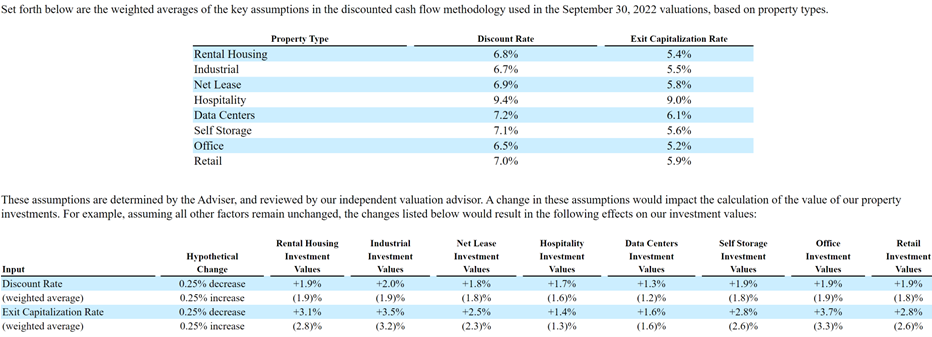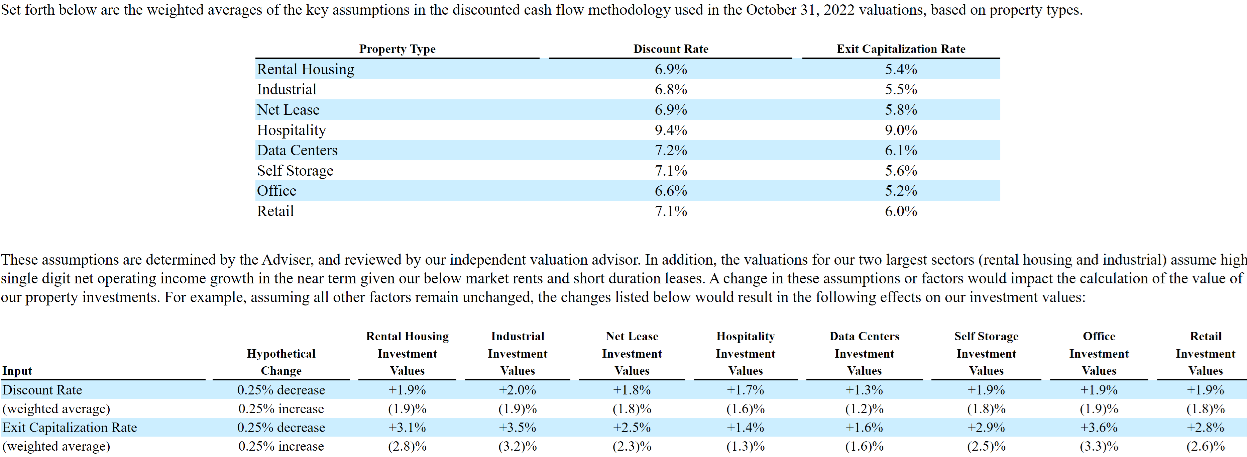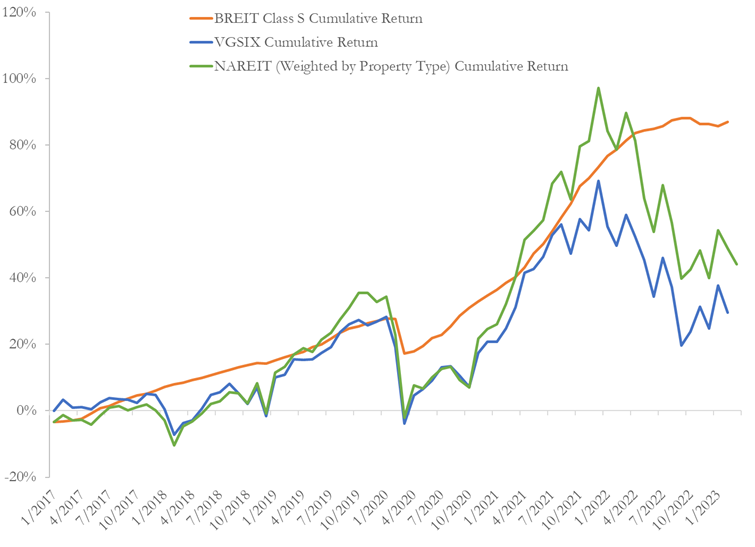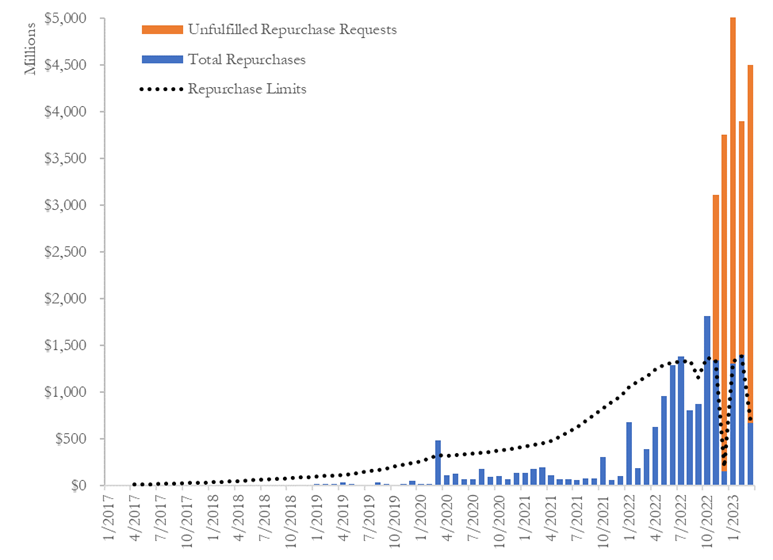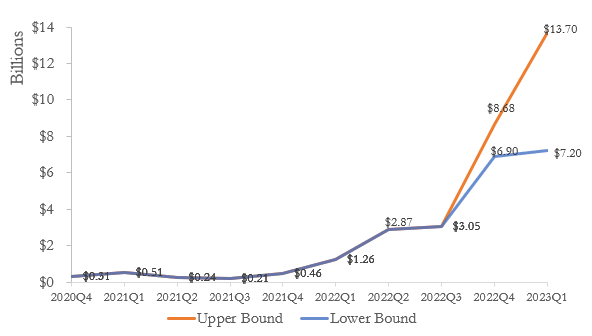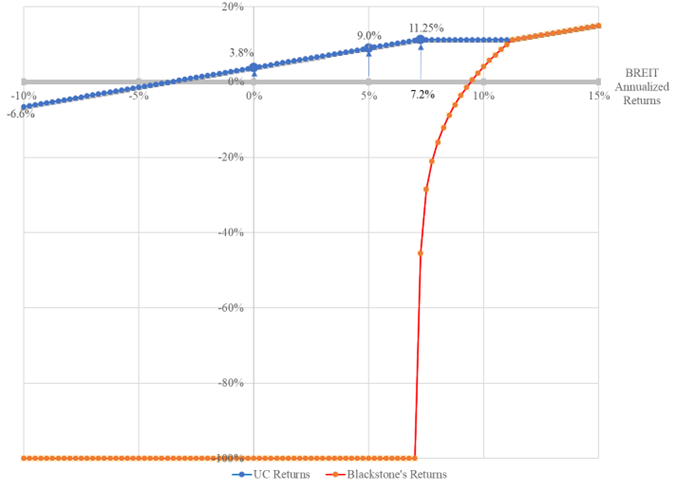
Apr 2023
NAV calculations are not governed by governmental or independent securities, financial or accounting rules or standards.BREIT's disavowal of its NAV for calculating historical performance is unambiguous.
The methods used by our Adviser and State Street or its affiliates to calculate our NAV, including the components used in calculating our NAV, are not prescribed by rules of the SEC or any other regulatory agency. Further, there are no accounting rules or standards that prescribe which components should be used in calculating NAV, and our NAV is not audited by our independent registered public accounting firm. We calculate and publish NAV solely for purposes of establishing the price at which we sell and repurchase shares of our common stock, and you should not view our NAV as a measure of our historical or future financial condition or performance. The components and methodology used in calculating our NAV may differ from those used by other companies now or in the future. [emphasis added]
Portfolio UpdateBREIT's Form 10-Ks have similarly false or misleading statements reporting returns based on its NAV which is not reliable for calculating historical returns. For example, BREIT's December 31, 2021 Form 10-K at p. 93 includes the following Table reporting total returns based on the NAV Blackstone calculated and which BREIT states elsewhere in the same Form 10-K is not reliable for calculating returns. [4]
For the month ended September 30, 2022, BREIT's Class I NAV per share increased from $15.09 to $15.11. The total return for Class I shares in September was 0.5% (not annualized). [1]
[1] BREIT's Class D NAV per share increased from $14.78 to $14.79, Class S NAV per share increased from $15.09 to $15.10 and Class T NAV per share increased from $14.87 to $14.88. BREIT's Class D total return was 0.4%, Class S total return was 0.4% and Class T total return was 0.4% for September 2022.


